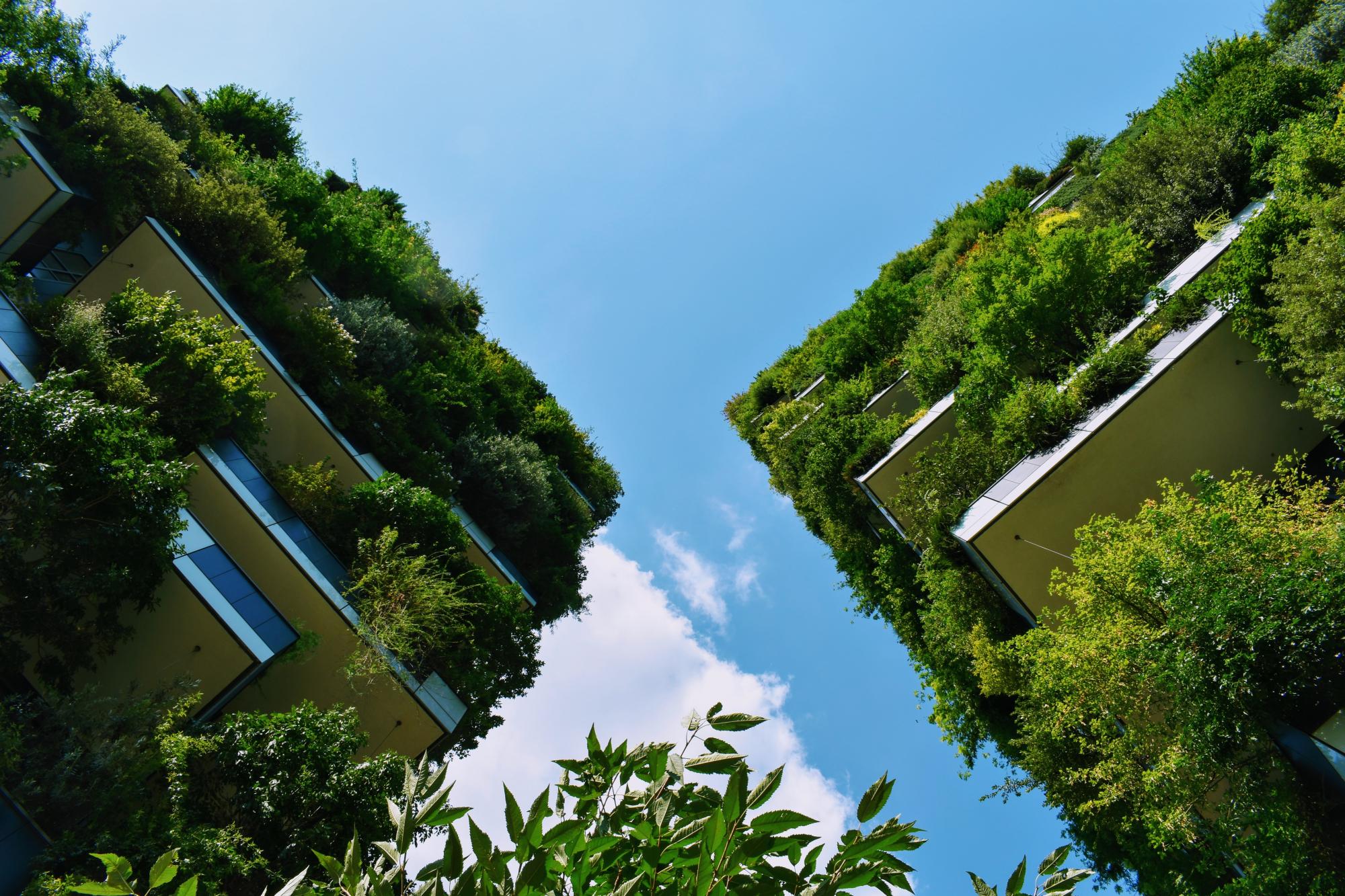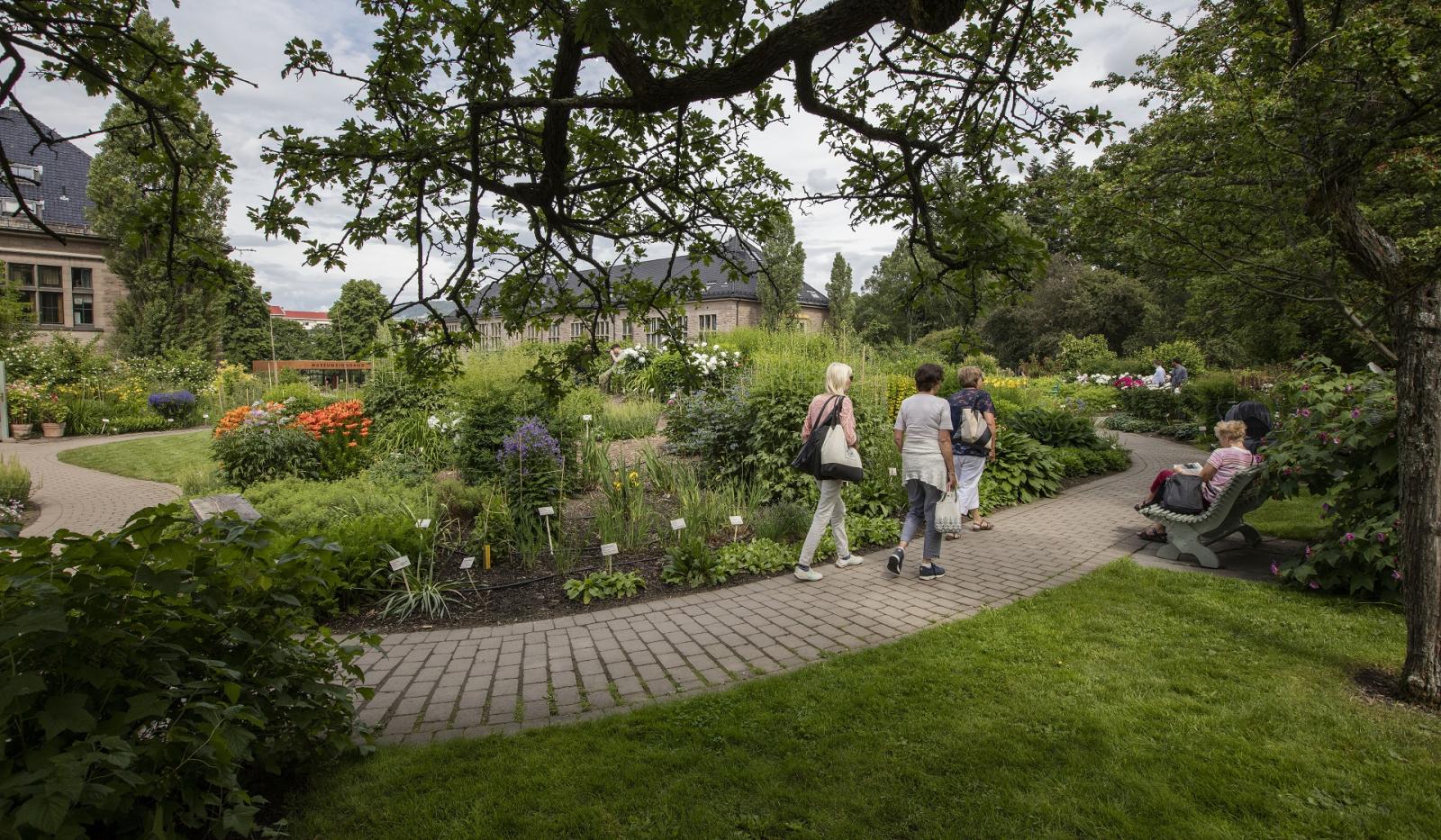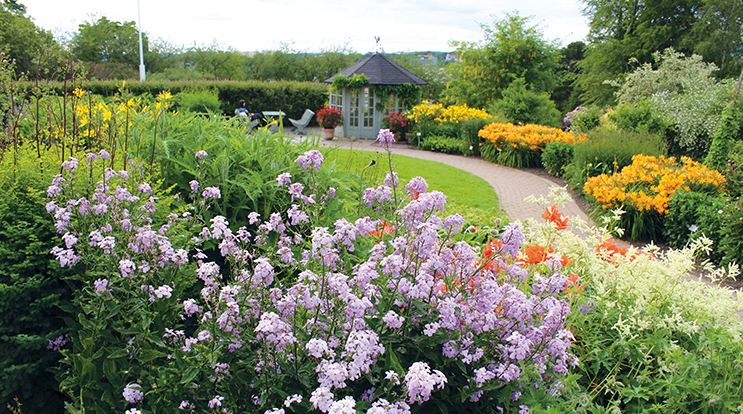Last updated: October 2021
The University's Botanical Garden is part of the National History Museum of Oslo and acts an important green space for both citizens and regional fauna. The Garden was founded in 1814 and is the oldest scientific garden in Norway, which through research, education and plant conservation seeks to increase public awareness of the importance of plant diversity. The Great-Granny's Garden is an important element in the Botanical Garden, aiming to preserve Norway’s horticultural heritage and prevent traditional fauna from disappearing, while encouraging sustainable use in future horticulture. The Garden also act as a sensory garden for people with dementia. (Ref.1,2)
Overview
Nature-based solution
- Parks and urban forests
- Botanical gardens
- Community gardens and allotments
- Horticulture
Key challenges
- Green space, habitats and biodiversity (SDG 15)
- Habitat and biodiversity conservation
- Green space creation and/or management
- Social justice, cohesion and equity (SDG 10)
- Environmental education
- Social justice and equity
- Health and well-being (SDG 3)
- Improving mental health
- Creation of opportunities for recreation
- Cultural heritage and cultural diversity
- Preservation of natural heritage
- Preservation of historic traditions
Focus
Creation of new green areas, Knowledge creation and awareness raising
Project objectives
- To preserve old-fashioned horticultural varieties and encourage people to use them in their gardening.
- To help people suffering from dementia through its design of a therapeutic sensory garden.
(Ref. 1)
Implementation activities
Establishment of Great-Granny's Garden, which is designed to improve the well-being for people suffering from dementia. It also accommodates wheelchair users (Ref. 1,2)
Conservation of out-dying species through a living archive of traditional plants. (Ref. 1)
Biodiversity conservation or restoration-focused activities
Biodiversity conservation:
- Protect species
- Undertake specific measures to protect species
- Undertake specific measures to protect valued species
- Means for conservation governance
- Raise public awareness
- Protect and apply traditional knowledge and conservation practices
Main beneficiaries
- National-level government
- Researchers/University
- Citizens or community groups
- Marginalized groups: Elderly people, People with functional diversities
Governance
Management set-up
- Co-governance with government and non-government actors
Type of initiating organisation
- National government
- Public sector institution
- Researchers/university
Participatory approaches/ community involvement
- Unknown
Details on the roles of the organisations involved in the project
The Botanical Garden is a part of the Natural History Museum, which is owned by the University of Oslo. The University is in turn owned by the government, making the Botanical Garden a governmental body. The intervention itself is a cooperation between The University's Botanical Garden and Oslo’s Resource Centre for Dementia and Psychiatric Care of the Elderly (Ref. 2). Since 2003, the Botanical Garden has been part of the national program The Plant Heritage Project, coordinated by the Norwegian Genetic Resource Centre (NIBIO), which gave birth to the idea to this project. NIBIO is owned by the Ministry of Agriculture and Food, which is part of the Norwegian government. (Ref. 3,4). The intervention itself was initiated by the Botanical Garden, as a response to the rapidly declining population of traditional plants, and a wish to spread public awareness about the issue. (Ref. 1) The Resource Centre got involved after being asked by the staff of Botanical Garden to cooperate (Ref. 1).
Project implemented in response to ...
... an EU policy or strategy?
Unknown
... a national policy or strategy?
Yes
(The Plant Heritage Project (Ref. 1))
... a local policy or strategy?
No
Financing
Total cost
Unknown
Source(s) of funding
- Public national budget
- Public local authority budget
- Funds provided by non-governmental organization (NGO)
- Other
Type of funding
- Unknown
Non-financial contribution
Unknown
Impacts and Monitoring
Environmental impacts
- Green space and habitat
- Increased green space area
- Increased protection of threatened species
Economic impacts
- Unknown
Socio-cultural impacts
- Social justice and cohesion
- Improved access to urban green space
- Increased visibility and opportunity for marginalised groups or indigenous peoples
- Health and wellbeing
- Improved mental health
- Gain in activities for recreation and exercise
- Cultural heritage and sense of place
- Increased awareness of flora and fauna as culturally and historically meaningful
- Education
- Increased awareness of NBS and their benefits
Type of reported impacts
Achieved impacts
Presence of formal monitoring system
Unknown
Presence of indicators used in reporting
No evidence in public records
Presence of monitoring/ evaluation reports
No evidence in public records
Availability of a web-based monitoring tool
No evidence in public records
References
1. Borgen, L. and Guldahl, A. (2010). Great-granny’s Garden: a living archive and a sensory garden. Biodiversity and Conservation, 20(2), Source link. [Document provided].
2. Natural History Museum. (2007). Great-Granny's Garden - Clone Archive and Sensory Garden/Oldemors hage - klonarkiv og sansehage. UiO, Oslo. Available at: Source link [Accessed: 29 October 2020].
3. Norwegian Institute of Bioeconomy Research. (2017). About NIBIO. Available at: Source link [Accessed: 29 October 2020].
4. The Norwegian Government. (n.d.). Ministry of Agriculture and Food. Available at: Source link [Accessed: 29 October 2020].
5. University of Oslo. (2016). Facts and Figures 2016 - A leading European University. [Document provided].
6. Palmebladet. (2007). Friends of the Botanical Garden - Members Newspaper/Medlemsblad for Botanisk hages Venner. Nr. 2, 2007. [Document provided].
7. Dalberg Poulsen, A. (2015). Botanic Garden Profile: Botanical Garden of the University of Oslo. Journal of Botanic Garden Horticulture. No. 13. Sibbaldia. Available at: Source link [Accessed: 29 October 2020].
8. University of Oslo. (2020). Gradual reopening of the Botanical Garden. Available at: Source link [Accessed: 29 October 2020].
2. Natural History Museum. (2007). Great-Granny's Garden - Clone Archive and Sensory Garden/Oldemors hage - klonarkiv og sansehage. UiO, Oslo. Available at: Source link [Accessed: 29 October 2020].
3. Norwegian Institute of Bioeconomy Research. (2017). About NIBIO. Available at: Source link [Accessed: 29 October 2020].
4. The Norwegian Government. (n.d.). Ministry of Agriculture and Food. Available at: Source link [Accessed: 29 October 2020].
5. University of Oslo. (2016). Facts and Figures 2016 - A leading European University. [Document provided].
6. Palmebladet. (2007). Friends of the Botanical Garden - Members Newspaper/Medlemsblad for Botanisk hages Venner. Nr. 2, 2007. [Document provided].
7. Dalberg Poulsen, A. (2015). Botanic Garden Profile: Botanical Garden of the University of Oslo. Journal of Botanic Garden Horticulture. No. 13. Sibbaldia. Available at: Source link [Accessed: 29 October 2020].
8. University of Oslo. (2020). Gradual reopening of the Botanical Garden. Available at: Source link [Accessed: 29 October 2020].


